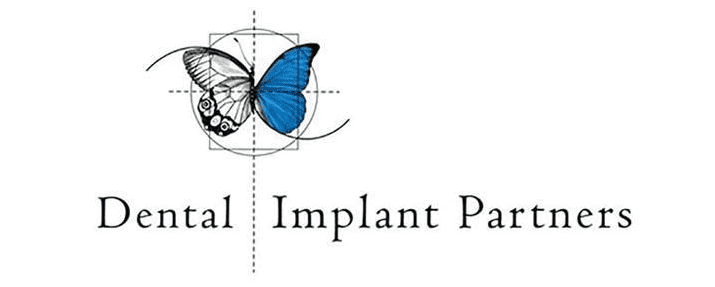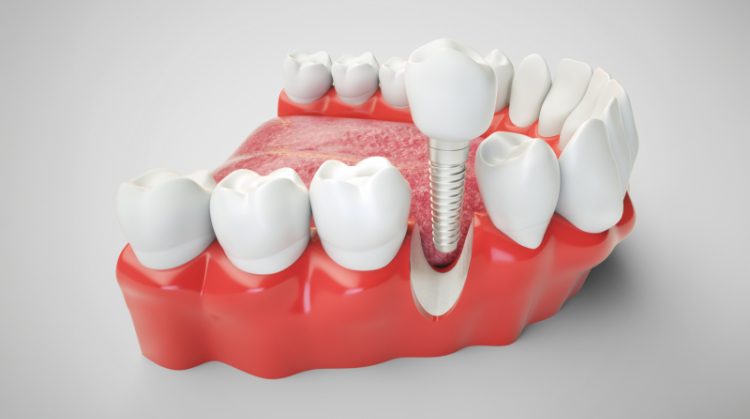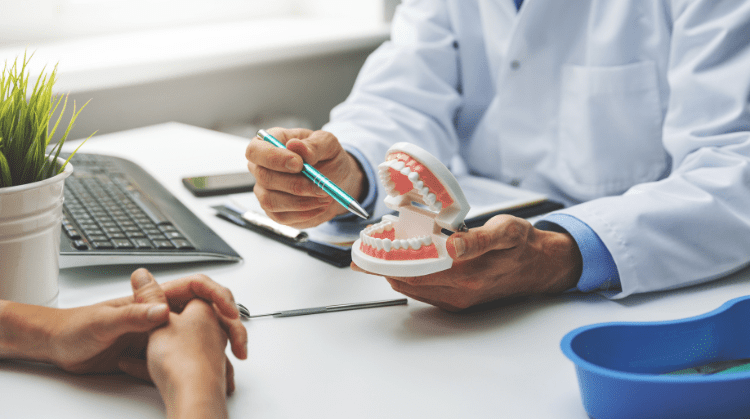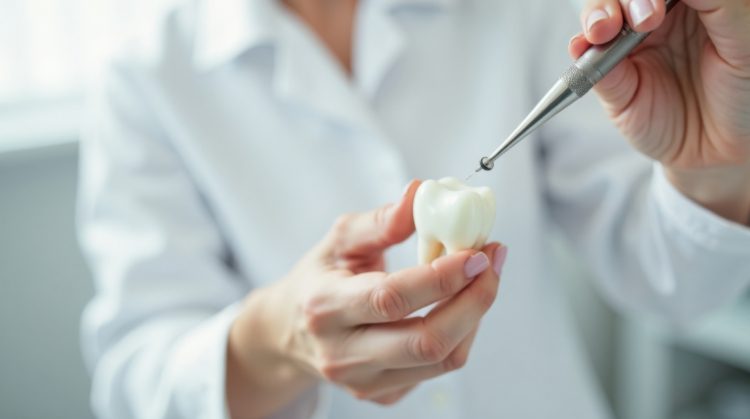By Dr. Belinda Gregory-Head, Dental Implant Partners, San Francisco
As a restorative dentist, I have the privilege of working at the intersection of function, aesthetics, and oral health. Restorative dentistry is not merely about filling cavities or replacing missing teeth; it encompasses a spectrum of specialized treatments aimed at rebuilding the integrity of the dentition and supporting long-term oral health. At Dental Implant Partners in San Francisco, I approach each case with the understanding that tooth repair has lasting consequences for a patient’s systemic health, jaw stability, and confidence.
The modern scope of restorative dentistry is deeply interdisciplinary, integrating aspects of periodontics, prosthodontics, endodontics, and even oral surgery. When I restore a tooth, I must account for occlusion, biomechanics, periodontal support, and the material sciences that govern the success of restorative materials. This comprehensive view allows me to tailor treatments that go beyond patchwork solutions and provide long-lasting functionality.
Patients often perceive restorative dentistry as reactive, intervening only after damage has occurred. However, I view my role as both corrective and preventive. By carefully evaluating the patient’s risk factors, whether related to caries susceptibility, bruxism, or occlusal discrepancies, I can select restorative strategies that anticipate future challenges and minimize the likelihood of retreatment. In this way, restorative dentistry becomes a cornerstone of proactive oral health care.

The Biological Foundation of Tooth Repair
Tooth repair begins with an understanding of the biological foundation of dental tissues. Enamel, dentin, and pulp each respond differently to disease and trauma, and restorative procedures must respect these biological principles. For example, while enamel is non-regenerative, dentin is capable of limited reparative response through odontoblastic activity. When I restore a tooth, I am not simply placing a material in a cavity; I am working with living tissues that must be preserved wherever possible.
Maintaining pulp vitality is often a critical objective. A conservative cavity preparation that preserves dentin thickness can reduce the risk of irreversible pulpitis. In cases where the pulp has been compromised, advanced techniques such as regenerative endodontics or bioceramic sealing can maintain biological function while allowing the restorative phase to succeed. Ignoring these biological considerations may result in short-term cosmetic success but long-term treatment failure.
Equally important is the relationship between the restored tooth and the surrounding periodontal tissues. Restorations must be designed to maintain proper gingival contours, avoid overhanging margins, and support periodontal health. This requires careful coordination between restorative planning and periodontal assessment. The biology of the tooth and its supporting structures is never secondary; it is the foundation upon which every successful restorative case is built.
Material Science in Modern Restorations
The success of restorative dentistry today is inseparable from advances in dental material science. The choice between composite resins, ceramics, zirconia, or gold alloys is not simply aesthetic or economic. It is dictated by biomechanical demands, occlusal load, and the anticipated longevity of the restoration. Each material interacts uniquely with tooth structure and opposing dentition, and part of my role is to match the right material to the right clinical scenario.
For instance, composite resins are ideal for minimally invasive restorations because of their adhesive properties and ability to preserve tooth structure. However, in cases of high occlusal stress or large structural loss, full-coverage ceramic restorations or zirconia crowns may be warranted. Material properties such as flexural strength, wear resistance, and thermal conductivity must all be considered in the decision-making process.
Advances in digital dentistry have further expanded material choices and precision. CAD/CAM technology allows for the fabrication of restorations that fit within microns of tolerance, reducing microleakage and enhancing durability. By integrating this technology into my practice, I am able to deliver restorations that not only restore form and function but also achieve superior long-term outcomes.
Diagnosis and Comprehensive Treatment Planning
No restorative procedure can be successful without accurate diagnosis and thorough planning. Diagnosis begins with a comprehensive evaluation that includes radiographic analysis, clinical examination, occlusal assessment, and a review of medical history. Each of these diagnostic components contributes to identifying the underlying cause of tooth damage and selecting the most appropriate restorative pathway.
A fractured tooth, for example, may not be solely the result of trauma. It could be the manifestation of occlusal overload, parafunctional habits, or even undiagnosed periodontal disease. Simply repairing the visible damage without addressing the underlying cause would lead to recurrent failure. My responsibility as a restorative dentist is to uncover these contributing factors and build them into the treatment plan.
Treatment planning also requires careful sequencing. A tooth requiring endodontic therapy must be stabilized before definitive restoration; occlusal adjustments must precede crown placement; and implant restorations demand coordinated surgical and prosthetic timelines. In my practice, treatment plans are rarely linear. They are multidimensional, integrating multiple disciplines to ensure each step supports the final restorative outcome.
Restorative Techniques for Caries Management
Dental caries remains one of the most prevalent oral health challenges, and restorative dentistry is the frontline defense in its management. Beyond the basic removal of decayed tissue, modern restorative techniques emphasize minimally invasive dentistry (MID), which seeks to preserve as much natural tooth structure as possible. Adhesive restorative systems have revolutionized this philosophy, allowing me to create durable restorations with far less tooth reduction.
Selective caries removal techniques have gained prominence, particularly in deep lesions where pulp vitality preservation is critical. Instead of complete excavation, which risks pulp exposure, selective removal permits the placement of bioactive liners and sealing materials that allow the dentin–pulp complex to recover. This approach requires both technical precision and biological understanding, as over-excavation can lead to unnecessary endodontic intervention.
Another vital consideration is the long-term stability of the restoration. Caries is not just a localized disease but the outcome of multifactorial risks such as diet, saliva composition, and oral hygiene. A successful caries restoration must therefore be paired with patient education and preventive measures. In this way, the restorative procedure becomes part of a broader strategy to halt the disease process, not merely repair its consequences.
Endodontic-Restorative Interrelationship
Endodontics and restorative dentistry are intrinsically linked. A tooth that has undergone root canal therapy must be properly restored to prevent reinfection and withstand functional forces. In my clinical experience, the most common failure of endodontically treated teeth occurs not because of inadequate root canal therapy, but due to insufficient restorative protection afterward.
Coronal sealing is the first priority after endodontic therapy. Even the most meticulously performed root canal can fail if microleakage allows bacterial ingress. Restorative strategies must therefore emphasize immediate and durable sealing of the access cavity. Composite resins often serve as interim restorations, but definitive coverage, usually in the form of crowns, is essential for long-term survival.
Structural reinforcement is another key element. Endodontically treated teeth often lack sufficient coronal structure, necessitating post and core build-ups. Advances in fiber-reinforced posts and adhesive techniques have significantly improved outcomes compared to traditional metallic posts. Properly executed, these restorations provide both functional resilience and aesthetic harmony, allowing the tooth to remain serviceable for decades.

Implant Dentistry as Restorative Excellence
Dental implants represent the pinnacle of restorative dentistry, offering a replacement that most closely replicates the natural tooth. As a restorative dentist, I work in close collaboration with surgical colleagues to design implant-supported restorations that meet both functional and aesthetic demands. My role involves ensuring that the prosthetic plan dictates implant positioning, angulation, and restorative contour.
Implant restorations must integrate seamlessly into the occlusal scheme. Poorly designed occlusal contacts can lead to overloading, screw loosening, or even peri-implant bone loss. In my practice, I use digital planning software to simulate occlusion and prosthetic design prior to surgical placement, ensuring that the restorative phase is supported from the outset.
The choice between screw-retained and cement-retained implant restorations also demands careful consideration. While screw-retained prostheses offer retrievability, they require precise angulation. Cement-retained crowns may provide superior aesthetics but carry the risk of residual cement leading to peri-implantitis. Balancing these factors requires both technical expertise and a deep understanding of long-term biological implications.
Aesthetic Considerations in Restorative Dentistry
While function is paramount, aesthetics cannot be underestimated in restorative dentistry. A tooth that is structurally sound but visually disharmonious can still undermine patient satisfaction. Aesthetic success requires an appreciation of shade, translucency, morphology, and the dynamic relationship between teeth, gingiva, and smile line.
Modern ceramic materials allow me to create restorations that mimic the optical properties of natural enamel and dentin. Layered ceramics and advanced staining techniques enable restorations that are virtually indistinguishable from natural dentition. Achieving this outcome, however, requires precise communication with the dental laboratory, including photographic documentation, digital impressions, and detailed shade mapping.
Aesthetic considerations also extend to soft tissue management. The emergence profile of a crown, the contour of the gingival margin, and the health of the papillae all influence the final appearance. This is why restorative dentistry must often integrate with periodontal procedures, such as crown lengthening or connective tissue grafting, to achieve optimal aesthetic outcomes.
Occlusion and Functional Stability
One of the most overlooked aspects of restorative dentistry is occlusion. Even the most beautiful and biologically compatible restoration will fail if it is placed in an unstable occlusal scheme. Functional harmony requires that restorations distribute forces evenly, respect centric relation, and allow for proper excursive movements.
Occlusal analysis is a critical part of my treatment planning. I routinely assess wear facets, mobility, and temporomandibular joint function before proceeding with major restorative cases. Failure to account for occlusal discrepancies can lead to fractures, mobility, and even implant failure. In cases of parafunction, such as bruxism, adjunctive therapies like occlusal splints are often necessary.
Restorative dentistry must also consider long-term adaptation. The occlusal scheme of a patient is not static; it changes with age, tooth loss, and periodontal status. Therefore, I design restorations with adaptability in mind, ensuring they can integrate into the patient’s evolving occlusal dynamics without compromising stability.
Preventive and Maintenance Strategies
Restorative dentistry does not end when the crown is cemented or the implant restored. Maintenance is integral to long-term success. Patients must be guided in proper oral hygiene techniques that respect the specific needs of their restorations, whether it involves floss threaders for bridges or interdental brushes for implants.
Professional maintenance is equally essential. I schedule regular follow-ups to monitor marginal integrity, occlusal wear, and periodontal health around restorations. Even the most advanced materials are not immune to failure if not properly maintained. Preventive interventions, such as fluoride applications or occlusal adjustments, can extend the life of restorations significantly.
Finally, preventive strategies must be individualized. A patient with xerostomia, for example, faces different risks than a patient with bruxism or uncontrolled diabetes. By tailoring maintenance protocols to each individual, I can maximize both the longevity of restorations and the overall oral health of my patients.
Final Thoughts: The Restorative Dentist as a Guardian of Oral Health
The role of a restorative dentist extends far beyond technical repair. It encompasses diagnosis, biological preservation, material selection, occlusal management, aesthetic integration, and long-term maintenance. Every restoration I place is not an isolated procedure but a component of a broader strategy to preserve oral health and function.
At Dental Implant Partners in San Francisco, I view restorative dentistry as a lifelong partnership with my patients. By addressing not only the immediate need but also the underlying causes and future risks, I strive to create restorations that are as enduring as they are functional. This requires constant engagement with evolving technology, material science, and clinical evidence.
Ultimately, restorative dentistry is about restoration of more than teeth. It is about restoring confidence, comfort, and quality of life. As a restorative dentist, I am proud to play this role in safeguarding my patients’ oral health, ensuring that their smiles remain both beautiful and functional for decades to come.

About Dental Implant Partners
At Dental Implant Partners, restorative dentistry has been at the heart of my work for over 25 years. What began as my own prosthetic practice has grown into a team of dedicated prosthodontists, general dentists, and highly skilled hygienists who share a passion for delivering exceptional patient care. Our hygienists, each trained originally as dentists, have been with us for many years and are beloved by our patients for their expertise and personal touch.
We provide a complete spectrum of restorative services, from conservative fillings and veneers to advanced dental rehabilitations supported by implants. For patients who may not be candidates for implants, we also specialize in expertly designed dentures that restore both function and confidence. Our focus is always on creating individualized treatment solutions that protect long-term oral health and provide lasting comfort.
Our practice is rooted in building long-term relationships with patients. We are committed to ethical, careful, and precise dentistry in a setting that reflects our standards of excellence, with a beautiful suite overlooking the San Francisco Bay. We truly love restoring smiles, and if you are looking for comprehensive restorative care, I encourage you to schedule a consultation with us. It would be our privilege to help you achieve a healthy, confident smile.




